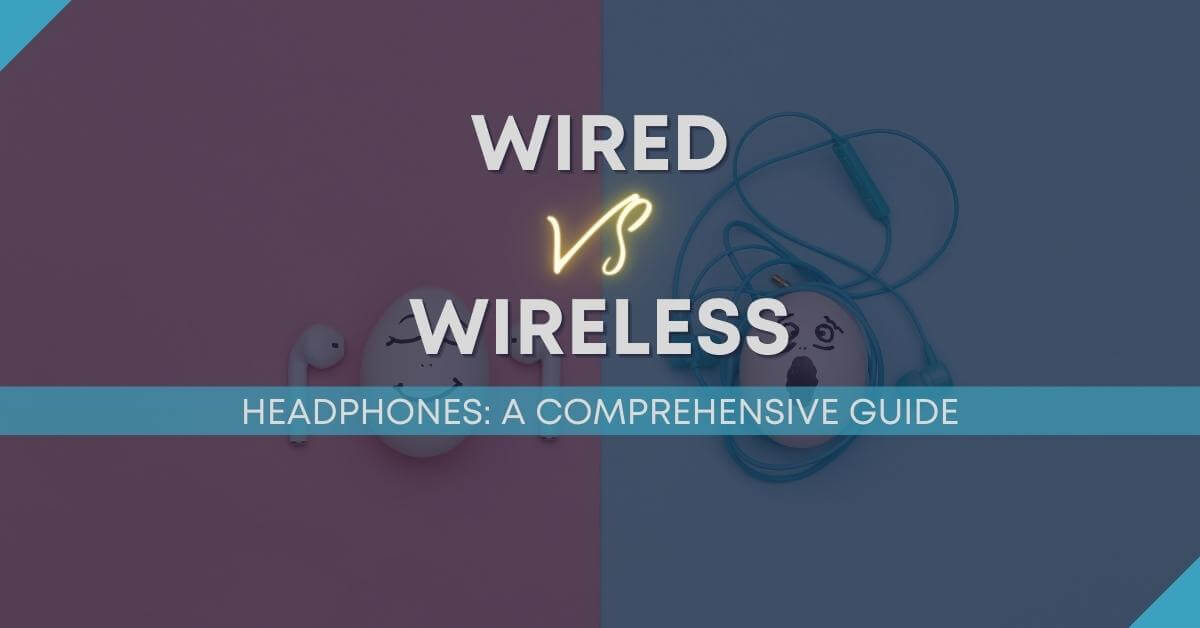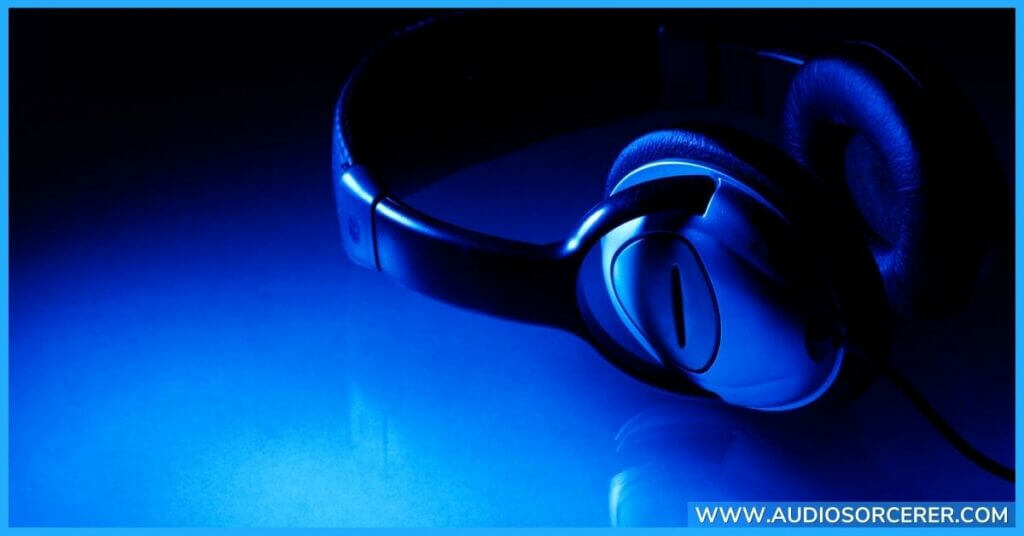
In the age of wireless gadgets and the increasing pursuit of minimalism, the timeless debate between wired vs wireless headphones has never been more relevant. For many, the humble headphone is not just another accessory but an essential companion for daily commutes, workout routines, and immersive audio experiences. But with so many options on the market, the question remains: Should you untether yourself and go wireless, or stick to the tried-and-true wired design?
In this comprehensive guide, we'll unravel the core principles of headphones, the unique characteristics that differentiate wired and wireless models, and the considerations you need to make when choosing between the two. With a rapidly advancing technological landscape, we will also present a preview into the exciting future that waits in the field of headphone technology. Whether you're an audiophile or a casual listener, prepare to embark on a sonic journey that will clarify the best choice for your ears and lifestyle.

Headphones come in many shapes and sizes, but they primarily fall into two categories: wired and wireless. Wired headphones, as the name suggests, use a physical wire to connect to an audio source, typically a 3.5 mm or 1/4 in jack. On the other hand, wireless headphones rely on Bluetooth technology to connect to your devices, removing the need for a physical cable connection.
The core technologies used in most headphones are the drivers. These are the parts of the headphones that convert electrical signals into sound that we can hear. The primary types of headphone drivers are dynamic, planar magnetic, electrostatic, and balanced armature. Each type of driver results in different audio qualities, but frequently, higher quality headphones will utilize dynamic or planar magnetic drivers.
There's more to sound quality than just the type of driver, however. Other factors, such as the material and design of the headphone, can also affect the sound. For example, open-back headphones often produce a more spacious audio experience.

One significant edge that wired headphones hold is the better sound quality that they can deliver. Generally, the sound transmission of wired headphones outperforms that of wireless variants. This is because, with a direct wire connection to the device, the audio signal travels uninterrupted and free from interference. This direct connection therefore leads to crisper, fuller, and finer audio, making wired headphones the go-to choice for studio professionals and audiophiles.
Another significant advantage with wired headphones is that they don’t require recharging or batteries. This characteristic makes for uninterrupted music listening sessions, regardless of the time duration. With wired headphones, there’s no need to worry about battery life or carrying a charger around. All you need is a headphone jack to plug into, a feature present in almost all portable music player devices.
While wired headphones come with numerous benefits, they aren't without their limitations. Mobility and the possibility of cord damage can be significant downsides of using wired headphones. The existence of a physical wire can restrict movement and can make multitasking challenging. The wire's constant bending and pulling can also lead to unnecessary tension, potentially causing damage over time which might affect the sound quality or lead to complete failure of the device.

The biggest attraction of wireless headphones (also known as Bluetooth headphones) is undeniably the freedom to move around unhindered. This starkly contrasts the limitations imposed by wired headphones, which confine users to a specific distance from their device. The ability to move freely without worrying about tangling or accidentally pulling out the cord offers significant advantages to people with active lifestyles.
Beyond the mobility aspect, wireless headphones usually feature some advanced elements that may not be present in wired versions. For example, wireless tech facilitates the integration of immersive features like active noise cancellation - a feature that utilizes built-in microphones to block out unwanted background noise. This feature creates a more focused listening experience, which can be particularly appealing to many users.
However, despite their convenience and advanced features, wireless headphones also have a few downsides. They rely on battery power to function, meaning users have to regularly charge them or bring the charging case. Without a power source, the device is as good as a pair of earrings.
Latency is another con of a wireless connection. There is a slight delay between the sound produced by the source device and when it is heard through the headphones. Though this issue has been minimized over the years with advancing technology, it is still more notable especially if you're watching videos or playing games.
Related Article: Tuning Out The World: Top 5 Best Noise-Canceling Headphones (2024)

Another essential factor to consider when choosing between wired vs wireless headphones is the cost. To be honest, the prices vary slightly between the two but are mostly the same. You can buy basic wired models for less than $20, while more superior options could cost you around $300. On the other hand, wireless headphones, because of the sophisticated technology involved, generally start at a bit higher price. The cheaper models could be around $30, but if you're looking for top-tier brands, you might have to spend above $500.
Audio quality is a key factor in choosing headphones. Enthusiasts often argue that wired headphones offer superior audio quality, as there is no need for audio data to be compressed for transmission. Meanwhile, wireless headphones use Bluetooth technology, which can potentially result in loss of audio quality due to data compression. However, improvements in technology have significantly narrowed this gap, with several high-end wireless models now capable of delivering audio quality on par with, if not superior to, their wired counterparts.
Wireless headphones score high points in terms of convenience and mobility. The absence of cables eliminates the frustration of tangling, making them ideal for activities like workouts or commuting. Moreover, with recent technological innovations, many wireless models offer advanced features like touch controls and quick access to voice assistants. On the other hand, wired headphones do not need to be charged, providing unlimited use as long as there’s a device to plug into.
Your specific use-case plays a large role in determining whether wired or wireless headphones are the better choice. For instance, if you spend several hours a day at a desk working on a laptop, wired headphones might be the choice for you. They don't require charging, meaning they can be used for an extended period, and there's no need to worry about battery life.
On the other hand, if you are a regular at the gym or enjoy outdoor activities, wireless headphones could be more appealing. They provide the freedom to move unhindered and are often designed with durability factors such as water resistance.
As technology evolves, it's essential to consider changes that may impact headphone usage. For example, many smartphone manufacturers have phased out the traditional headphone jack, pushing buyers towards wireless options. It often means purchasing an adapter if you'd prefer to use wired headphones.
When deciding between wired vs wireless headphones, a balance must be struck between the convenience they offer, and their sound performance. Consider diligently the factors that matter most to you. If you value unrivalled audio quality and no reliance on a power source, wired headphones are your best fit. However, if you prioritize freedom of movement and innovative features, wireless headsets should be your go-to. As individual needs and technology continue to evolve, so will the factors affecting this decision.

Over recent years, the world of headphone technology has grown and developed at pace, with many companies releasing innovative products that redefine the way we experience audio. Wireless headphones, in particular, have enjoyed a surge in popularity owing to their ease of use. With devices becoming progressively more innovative, there's been a renewed focus on enhancing wireless headphone technology to improve connection stability and prolong battery life.
However, wired headphones still enjoy a significant following, especially among audiophiles who treasure stability in audio quality. Wired headphones provide a lossless audio transmission, eliminating any risk of interference from nearby obstacles or electronic devices. Higher-end wired models boast some impressive features, often surpassing the audio performance of their wireless competitors.
Noise cancellation technology is one rapidly evolving feature in headphones, enhancing the user's audio experience by limiting background noise. This technology has become more sophisticated over recent years. It is now found in both wired and wireless headphone models, showing its increasing significance to users.
Wireless headphones equipped with active noise cancellation (ANC) technology have become popular among travelers, remote workers, or those seeking solace in noisy environments. Wired headphones, too, have successfully incorporated this feature, with a dedicated noise-cancellation circuitry providing more effective noise blocking capabilities.
3D audio is another ground-breaking development that promises to revolutionize the way we perceive sound. This technology mimics the way humans naturally hear, creating a three-dimensional soundscape that gives the impression of sound coming from different directions. Such a feature could enhance the experience of music listeners, movie watchers, and gamers.
Wireless headphones might have an advantage in this field due to the freedom of movement they provide. They allow users to easily turn their heads, improving the immersive experience offered by 3D audio. However, considering that the final audio quality depends mostly on the source and processing capability, there's technically no reason why wired headphones cannot achieve equally impressive 3D audio results.
Going forward, consumers should expect continued innovations from both wired and wireless headphones. Wireless technology will likely focus on improving connection strength, increasing battery life, and offering better codec support to enhance audio quality. Given the preference for mobility and convenience in today's fast-paced society, we may also notice a trend toward increasingly compact and comfortable designs within wireless earbuds.
Wired headphones, being the preferred choice for audio purists, will keep advancing in reproducing accurate sounds and delivering high-fidelity audio. Users can look forward to improved build and design, with a focus on comfort for extended use. Wired headphone technology will continue to embody high-quality components and the demand for noise-cancellation features.
Related Article: What Is Binaural Audio? Understanding 3D Sound Technology
After dissecting the intricacies of both wired vs wireless headphones, analyzing their pros and cons, and considering various buyer factors - we stand at an intersection of personal preference, necessity, and technological progress defining our headphone choices. No matter which type suits best for your specific context, one thing is certain - the future holds immense potential for headphone technology.
The upcoming innovation, from enhanced noise cancellation to the advent of 3D audio, will continue to refine our audio experiences. This exploration empowers you, the reader, to navigate this evolving landscape with confidence, making the informed decisions that will let you tune into the world in increasingly engaging and high-fidelity ways.
"Some of the links within this article are affiliate links. These links are from various companies such as Amazon. This means if you click on any of these links and purchase the item or service, I will receive an affiliate commission. This is at no cost to you and the money gets invested back into Audio Sorcerer LLC."